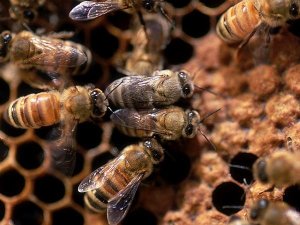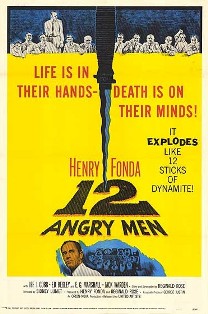Group Decision Making
Today, let's talk about how groups make decisions. The University of Houston Mathematics Department presents this program about the machines that make our civilization run, and the people whose ingenuity created them.
It's fascinating how groups of animals make decisions. A school of fish or a swarm of bees frequently has to take collective action. However, collective action requires that all members of a group jointly reach a decision. How do animals in a group manage to agree on a single course of action? No single bee polls all members of the hive. Indeed, in large groups each member communicates only with a few immediate neighbors.' Yet ants, bees, and fish frequently act as if they had a single, collective mind.

While scientists do not fully understand group intelligence, they have studied many of its aspects. For instance, when choosing a new place for a hive, honeybees will communicate to each other the location of a promising spot using a waggle dance. Bees walk around in a figure eight pattern, waggling their bodies when facing the direction of the chosen spot. However, when different scouts do not agree on a location, they will head-butt a dancing competitor. Rivaling factions thus mutually suppress each other. The winning group is the one that out-butts the other. Presumably, this faction was larger, or more vigorous in promoting a new spot because the spot was actually better.
In a related study, scientists have examined the impact of a vocal, opinionated minority in making collective decisions. In a head-to-head competition with a less opinionated majority, the strident, smaller group can carry the day. A mathematical model suggests that this advantage disappears in the presence of individuals that do not belong to either group. An uninformed group seems to temper the influence of the vocal minority. Scientists found excellent support for this theory by observing the behavior of schooling fish.

But there is something quite puzzling about how groups reach a collective decision. Consider the case of a jury in a trial. Each juror forms an independent opinion about the guilt or innocence of a defendant. During the deliberation, information is exchanged, and the opinions of jurors become more similar. In fact, in the absence of agreement a mistrial is declared.
Would it be better if jurors were barred from discussing the case between themselves, and we followed the decision of the majority? Indeed, a shrill minority may effectively promulgate its views in a group of jurors. The Nobel prize winning economist, Daniel Kahneman, suggests that the increased conformity that results from discussion decreases the quality of group decisions. He urges that all participants in a meeting write down their opinions before any discussion takes place, and that these initial opinions carry significant weight in the eventual decision.

It appears that social animals can avoid such pitfalls. Their survival depends on the efficient sharing of information and effective group decision making. Over millions of years they have evolved finely tuned democracies. Perhaps we can look to them to help us improve ours.
I'm Krešimir Josić, at the University of Houston, where we're interested in the way inventive minds work.
For a discussion of the head-butting bees see T.D. Seeley, et al. Science, vol. 335 (6064) pp. 108-11.' Thomas Seeley has studied honeybees for decades, and explains many of his findings in a very accessible book entitled "Honeybee Democracy."
The bee waggle dance is pretty amazing.' It's described in some more detail here https://en.wikipedia.org/wiki/Waggle_dance.' An infographic is here http://vetsci.co.uk/2011/08/13/the-dance-language-of-honeybees/# (this one would be good for kids). You can find hundreds of waggle dance videos on YouTube.
The impact of minorities on group decisions is discussed in I. Couzin, et al. Science, vol. 334 (6062) pp. 1578-80.' Dr. Couzin is at Princeton and does extremely interesting work on collective behavior in animal groups.
Daniel Kahneman has written a very accessible book entitled "Thinking Fast and Slow" about his research in decision theory. The following short editorial discusses a few ideas from the book http://www.nytimes.com/2011/10/23/magazine/dont-blink-the-hazards-of-confidence.html?pagewanted=all.
I have a blog at https://kjosic.wordpress.com/, and you can follow me on Twitter @kjosic.
This episode was first aired on March 20, 2012